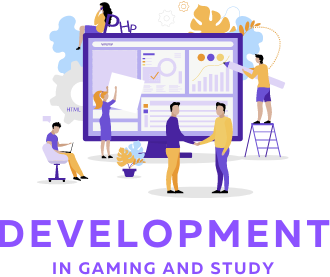Web improvement is a fundamental and consistently developing field that shapes our collaboration with the computerized world. From making straightforward site pages to creating complex web applications, web improvement includes a https://xbjksh.com/ scope of disciplines and innovations. This article gives a top to bottom investigate web improvement, investigating its center parts, authentic advancement, latest things, and future bearings.
What is Web Improvement?
Web advancement is the method involved with planning, making, and keeping up with sites and web applications. It includes a blend of coding, plan, and key wanting to construct computerized stages that are utilitarian as well as connecting with and easy to understand. The field can be comprehensively isolated into a few regions:
Frontend Improvement: This alludes to the client-side of web advancement, zeroing in on what clients collaborate with straightforwardly. Frontend engineers use dialects like HTML (Hypertext Markup Language), CSS (Flowing Templates), and JavaScript to make the format, plan, and intuitive components of a site. They want to guarantee that the site is outwardly engaging and performs well across different gadgets and programs.
Backend Improvement: This includes the server-side of web advancement, where designers work on the fundamental usefulness that drives the frontend. Backend designers use dialects like Python, Ruby, PHP, and Java, alongside data sets like MySQL and MongoDB, to deal with information the executives, server rationale, and application usefulness.
Full-Stack Improvement: Full-stack engineers are capable in both frontend and backend advancements. They can deal with all parts of a web project, from the UI to server-side usefulness, making them flexible in building complete web arrangements.
Website composition: Albeit firmly connected with frontend advancement, website architecture centers explicitly around the feel and client experience. Originators work on the visual design, variety plans, typography, and by and large client experience (UX) to make a site that is both appealing and simple to explore.
The Advancement of Web Improvement
Web improvement has gone through massive changes since the beginning of the web:
Early Web (1990s): The early web was described by static HTML pages. Sites were basic, comprising fundamentally of text and pictures with insignificant intuitiveness. Usefulness was restricted, and configuration was much of the time essential.
Dynamic Web (2000s): The presentation of server-side prearranging dialects like PHP and advances like AJAX (Nonconcurrent JavaScript and XML) considered more unique and intelligent sites. This period saw the ascent of highlights like continuous updates and client explicit substance.
Web 2.0 (2000s-2010s): Web 2.0 welcomed an emphasis on client created content and social communication. The improvement of virtual entertainment stages, web journals, and cooperative devices stressed client support and ongoing correspondence.
Current Web (2010s-Present): The ongoing time is set apart by modern structures and libraries, for example, Respond, Rakish, and Vue.js for frontend advancement, and strong backend innovations like Node.js and microservices. Sites and applications today are intended for speed, versatility, and intelligence, with a solid accentuation on giving a consistent client experience.
Latest things in Web Improvement
A few patterns are forming the eventual fate of web improvement:
Responsive Plan: With the developing utilization of cell phones, responsive plan is fundamental. Sites should adjust to various screen sizes and directions to guarantee a reliable client experience across all gadgets, from cell phones to work areas.
Moderate Web Applications (PWAs): PWAs offer a crossover experience by joining the best highlights of web and portable applications. They give disconnected capacities, message pop-ups, and quick burden times, giving clients a close local application experience through their internet browsers.
Man-made brainpower (artificial intelligence) and AI (ML): artificial intelligence and ML are progressively coordinated into web applications to upgrade usefulness and client communication. Uses of artificial intelligence incorporate chatbots, customized content proposals, and prescient examination.
WebAssembly (Wasm): WebAssembly empowers superior execution applications to show in the program to gathering code from dialects like C, C++, and Rust into a parallel organization. This innovation considers quicker and more productive web applications.
Serverless Engineering: Serverless figuring permits designers to construct and send applications without overseeing server framework. By utilizing cloud administrations, engineers can zero in on composing code while the cloud supplier handles scaling and server the board.
The Fate of Web Advancement
The eventual fate of web improvement guarantees invigorating progressions and valuable open doors:
Improved Security: With expanding digital dangers, there will be a more noteworthy spotlight on carrying out powerful safety efforts. This incorporates encryption, secure coding practices, and normal security reviews to safeguard client information and guarantee safe collaborations.
Further developed Client Experience (UX): Future web advancement will keep on zeroing in on making drawing in and natural client encounters. Propels in UX configuration will prompt more intuitive and vivid web applications.
Mix of Arising Advances: Innovations like increased reality (AR), computer generated reality (VR), and the Web of Things (IoT) will turn out to be more coordinated into web applications, offering additional opportunities for intuitive and associated encounters.
Maintainability: As ecological worries develop, web advancement will progressively focus on supportability. This incorporates improving execution to diminish energy utilization and embracing eco-accommodating practices in web facilitating and improvement.
End
Web improvement is a dynamic and fundamental field that shapes our computerized encounters. From its beginning of static HTML pages to the refined, intelligent utilizations of today, it has consistently developed to meet innovative headways and client assumptions. As we plan ahead, web improvement will keep on advancing, consolidating new innovations and patterns to upgrade client encounters and address arising difficulties. It stays at the center of the computerized scene, driving the formation of drawing in, utilitarian, and effective web-based conditions.
